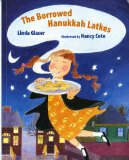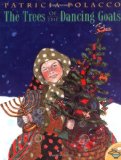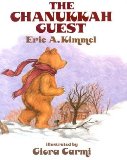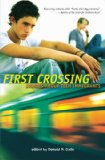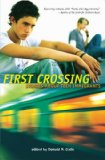 First Crossing is an anthology of short stories about immigration, which includes works by some fabulous authors. I’m going to do the content ratings separately by story since many teachers pull individual pieces for class. I’ll be covering the volume in two parts, 5 stories today, 5 next time.
First Crossing is an anthology of short stories about immigration, which includes works by some fabulous authors. I’m going to do the content ratings separately by story since many teachers pull individual pieces for class. I’ll be covering the volume in two parts, 5 stories today, 5 next time.
Great for: Modern immigration stories. So many immigration stories are historical fiction. It is easy for children to look at the immigrant experience through the lense of history and decide what was fair and unfair. It is another thing entirely to have them discuss more current issues like illegal border crossing from Mexico. This is also fabulous because of the range of countries represented. I felt like for a long time I could only get my hands on stories about Russian Jewish immigrants or good old English settler types. While a greater variety of stories are more available now, it’s rare to see so many covered so well.
First Crossing by Pam Munoz Ryan
Recognize the author? She’s written the incredible book Esperanza Rising about the Mexican immigrant experience. This story is aimed at slightly older children and handles the very controversial topic of illegal immigration from Mexico and border crossings. First Crossing is also fascinating to me because while the men in the story are clearly working in the US, for many the goal is not citizenship, they simply want a better life for their families in Mexico, and must earn US dollars to have that. Like many books about immigration this does contain foreign words (Spanish in this case). Ryan does a decent job of providing sufficient context for understanding.
Sex, Nudity, Dating – After his first crossing Mario says he feels like he’s been molested, but he is not speaking of any sexual contact.
Profanity – None.
Death, Violence and Gore – Marco remembers stories he’s heard of immigrants dying during the border crossing, in particular of 17 Mexicans that were killed in a truck accident.
Drugs, Alcohol and Smoking – Marco waits in front of a liquor store. Once he thinks of drinking beer.
Frightening or Intense Things – There is a great deal of danger for Mario, but as this book is aimed at older children nothing should be too nerve-wracking for them unless you are in a place where children may be personally familiar with this type of experience.
Second Culture Kids by Dian Curtis Regan
Second Culture Kids begins in Venezuela as Chavez is trying to hold control of the government. There is fighting between different factions, those that want Chavez out and those that support him. Venezuelans are caught in the middle, but Amina’s stepfather works for an American oil company and Americans are even more likely to be targeted in the violence. Uprooted and sent to Texas, Amina misses her whole life, especially her grandparents and her boyfriend. My only real criticism of this one is that sometimes Regan uses somewhat broken English as though she’s writing in Amina’s voice, and sometimes she does not.
Sex, Nudity, Dating – Amina misses her boyfriend and has love notes from him and thinks of kissing him.
Profanity – None.
Death, Violence and Gore – Amina’s father died on a fishing boat during a storm. There are deaths in Venezuela due to the fighting
Drugs, Alcohol and Smoking – None.
Frightening or Intense Things – Mostly it is just sad reading about people leaving their homes without their belongings and pets.
My Favorite Chaperone – by Jean Davies Okimoto
Oh how I loved this one. Maya and her family have come from Kazakhstan. Maya is dying for normal teenage things, like being able to go to a dance and dance with a boy, but it is not considered appropriate in her culture. She also is incredibly aware of how other students’ cultures affect perception and when she is called to the principal’s office (to deal with the problem of her brother fighting), she recalls how a student who came from Cambodia was filled with real fear after being sent. While the other children laughed, Maya understands that fear and danger are very different for immigrants from some countries. This story is especially strong in showing how children take on or share the family burden.
Sex, Nudity, Dating – Maya hugs a boy and dances with a boy. Maya’s aunt is a mail order bride.
Profanity – None.
Death, Violence and Gore – Maya’s brother fights with another boy and the other boy needs stitches. Maya is lecturing her brother while making dinner and waving a knife around. He tells her to watch the knife and she says she wasn’t going to stab him.
Drugs, Alcohol and Smoking – None.
Frightening or Intense Things – None.
They Don’t Mean It – by Lensey Namioka
Aimed at and appropriate for a slightly younger audience, this story mainly addresses the culture differences in communication styles. Namioka has written many books about the Chinese-American experience.
Sex, Nudity, Dating – None.
Profanity – None.
Death, Violence and Gore – None.
Drugs, Alcohol and Smoking – None.
Frightening or Intense Things – None.
Pulling Up Stakes by David Labar
If you’re trying to sell immigration stories to the Twilight crowd, this is your in. Adrian’s family moves to the Unites States because his uncle promised his father work in Arkansas. Except that by Arkansas he meant Alaska. And well, the work wasn’t that easy to find. But Adrian’s main problem is stemming from the fact that his classmates learn he’s from Romania, and like any vampire crazed teenagers living in the bizarre full-day darkness of Alaska, they start to wonder if they have a real live vampire on their hands. I couldn’t tell if I felt worse for Adrian because they kept checking to see if he was a vampire, or for the other kids who were kinda really thinking maybe he was. In the end, I decided it was all sweetly awkward and not cringeworthy.
Sex, Nudity, Dating – Adrian notices a pretty girl. Later he kisses a girl and thinks of kissing her everywhere.
Profanity – None.
Death, Violence and Gore – Adrian’s father says he’s going to kill Ian when he finds out they are in Alaska and there is no job.
Drugs, Alcohol and Smoking – None.
Frightening or Intense Things – None.

